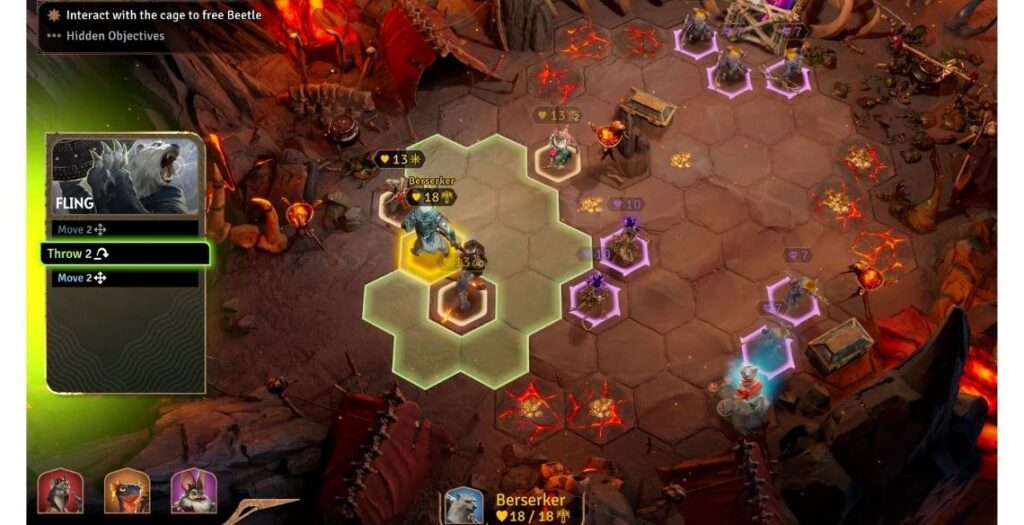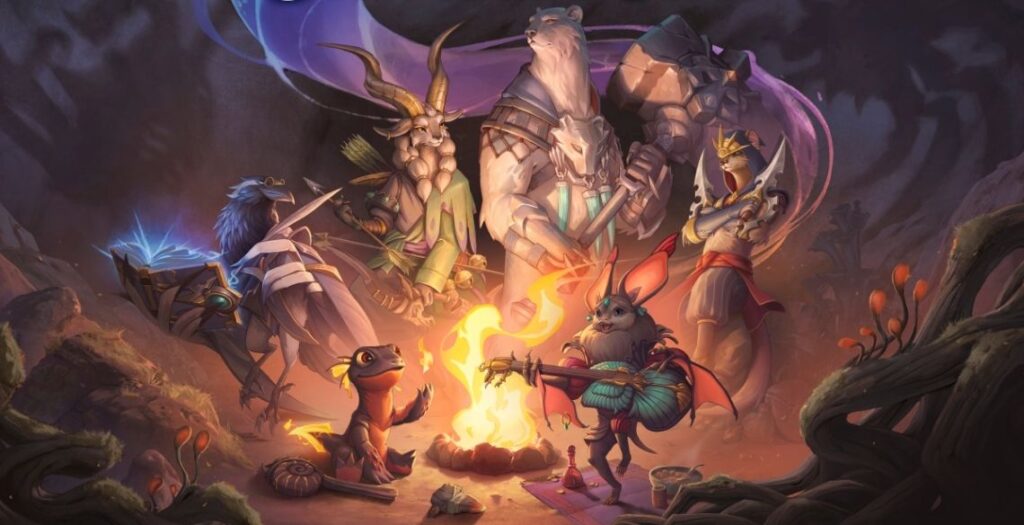Sunderfolk wasn’t just my favorite game at GDC—it’s one of the most thoughtful, seamless, and genuinely exciting co-op RPGs I’ve played in years. It’s not just the mechanics, the world, or the polish (though all of those are there). It’s the feeling. This is a game that brings people together in the best way possible. It respects your time, your creativity, and your friendships—and for me, it might already be a Game of the Year contender.
Developed by Secret Door, a Dreamhaven studio, Sunderfolk is a tactical, turn-based RPG for 1–4 players where the goal isn’t just to fight monsters, but to live in a world with your party. You’ll take on strategic combat missions, explore a rich narrative, build relationships in town, and customize your characters through layered but approachable systems. And the most impressive part? It does all of this through one of the smoothest co-op setups I’ve ever experienced.
The core mechanic is deceptively simple: players connect via their phones or tablets to a central screen (TV, monitor, whatever you’re running the game on). Your device becomes your character sheet. You swipe through cards, draw movement paths, ping enemies, and confirm decisions. In practice, it feels a bit like Jackbox meets D&D—but smarter, faster, and far more ambitious.
During my demo, I immediately saw how fluid it was. There’s no lag, no clunkiness, just crisp, clean interaction. You use skill cards to perform actions, and a customizable Fate deck replaces dice rolls with cards that inject randomness (and sometimes wild modifiers) into the fight. Want to attack, push an enemy into lava, and then drop a music-powered AOE on your team to buff them? You can. And it feels great.
Combat is structured around true cooperation. All players take turns in any order, then enemies act. You talk, you strategize, you ping with built-in coordination tools that genuinely rival or outperform tools like Roll20. Even if you’re not the one taking the current action, you’re involved.
And if someone has to leave mid-session? No problem. The game lets you reassign their character instantly, with the tap of a button. Whether you’re controlling one hero or four, solo or with friends, the experience is consistent and balanced.
Sunderfolk is a perfect gateway into TTRPGs.

When I spoke to the developers, it was clear that Sunderfolk wasn’t built in a vacuum. It’s the result of a team who knows the pain of trying to schedule a campaign. Who knows how hard it can be to get three friends together on the same night. Who knows how fun tabletop is when it works and how frustrating it can be when it doesn’t.
Everything in Sunderfolk is built around reducing that friction. Want to play solo? You can. Want to switch between characters so you can unlock town stories or do some RP between missions? You’re covered. There are even “session recap” features baked into the UI so you can keep up, even if you’re not the one driving the story moment to moment.
And all of it is enhanced by the voicework of Anjali Bhimani, who narrates the game and voices all the characters with the energy of a seasoned DM. It’s a subtle touch that ties the experience together. It honestly makes you feel like you’re sitting at a table with a friend who’s telling the story just for you.
Mechanically, Sunderfolk offers plenty of depth without overwhelming new players. You choose from six distinctive heroes: Arcanist, Bard, Berserker, Pyromancer, Ranger, and Rogue. Each one fills a unique strategic role, whether you’re supporting allies, dealing elemental damage, or slipping through enemy lines.
As heroes level up, they can be customized with weapons, armor, items, and new skill cards, giving players the freedom to shape their builds to fit their preferred style. The Fate deck—your personal source of randomness—can also be tweaked to emphasize risk-taking, consistency, or status effects. It’s a flexible system that rewards experimentation while staying intuitive and approachable.
Between missions, players return to the town of Arden. This is where Sunderfolk really leans into the roleplaying feel. You can shop, upgrade buildings, build relationships with NPCs, unlock new town areas, vote on upgrades with your group, and even rename items and landmarks. (We named a bridge the Golden Gate—now it’s our bridge forever.)
Sunderfolk ensures player agency even when not playing alone.

There’s no shared loot, but gifting is easy and encouraged. If one player wants to explore while another min-maxes their build or chats with a romanceable owl NPC? Totally fine. The game makes space for different kinds of players to enjoy themselves together, without stepping on each other’s toes.
What I loved most about Sunderfolk is that it doesn’t feel like a board game or a video game—it feels like a campaign. One you can run from your couch with nothing more than a screen and a phone. The team at Secret Door has found a way to capture the feeling of “let’s meet up this week and play again” without the logistical nightmare that normally comes with that.
Whether you’re strategizing in combat or poking around town between missions, Sunderfolk creates the kind of co-op experience that feels both meaningful and relaxing. It’s deeply customizable, narratively rich, and flexible enough to meet players where they are—whether they’re solo adventurers, partner duos, or a full party of four.
This isn’t just a good idea. It’s something special. And I can’t wait to play it again.
Sunderfolk launches April 23 on Nintendo Switch, PlayStation 5, Xbox Series X|S, Steam, and the Microsoft Store for $49.99.







